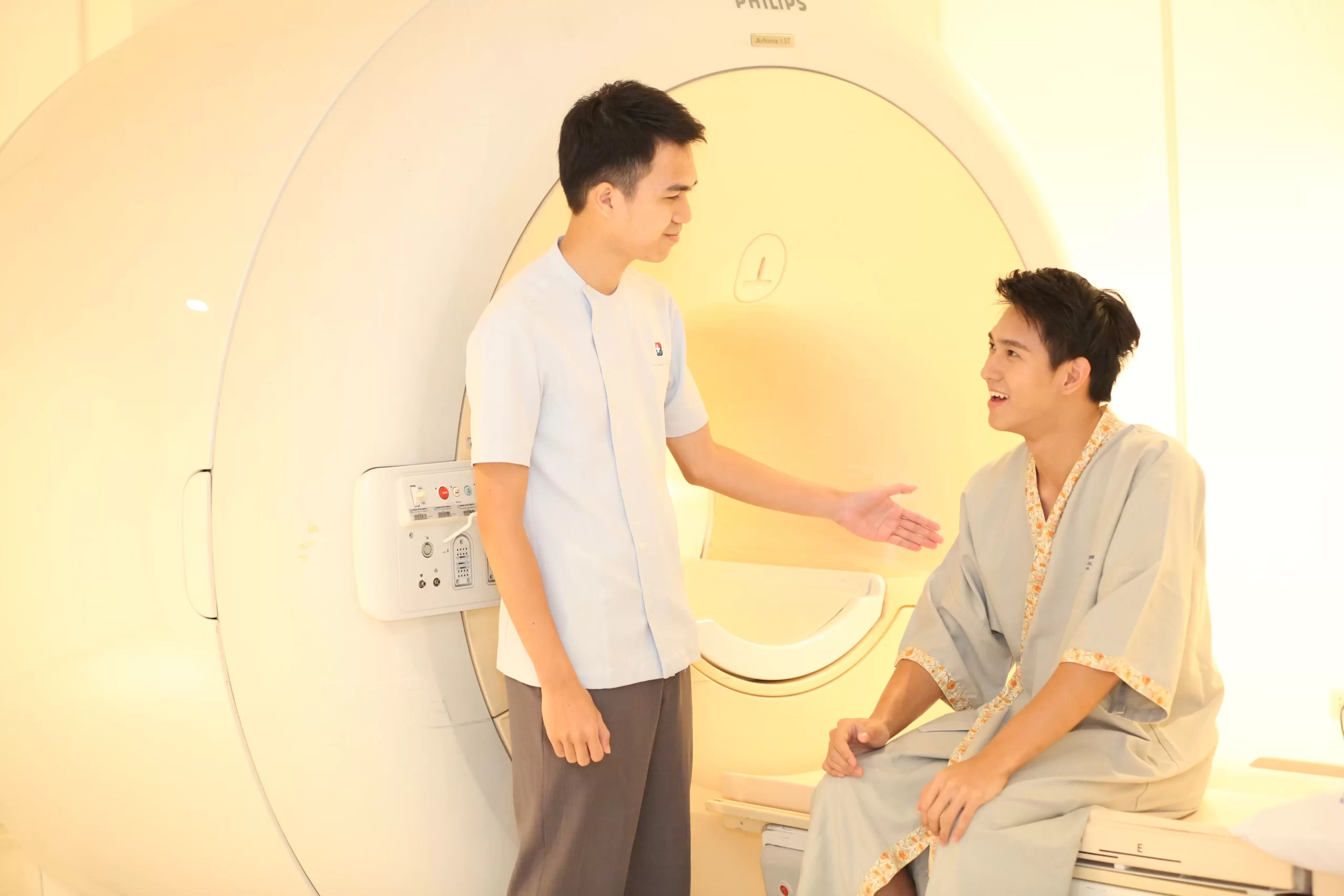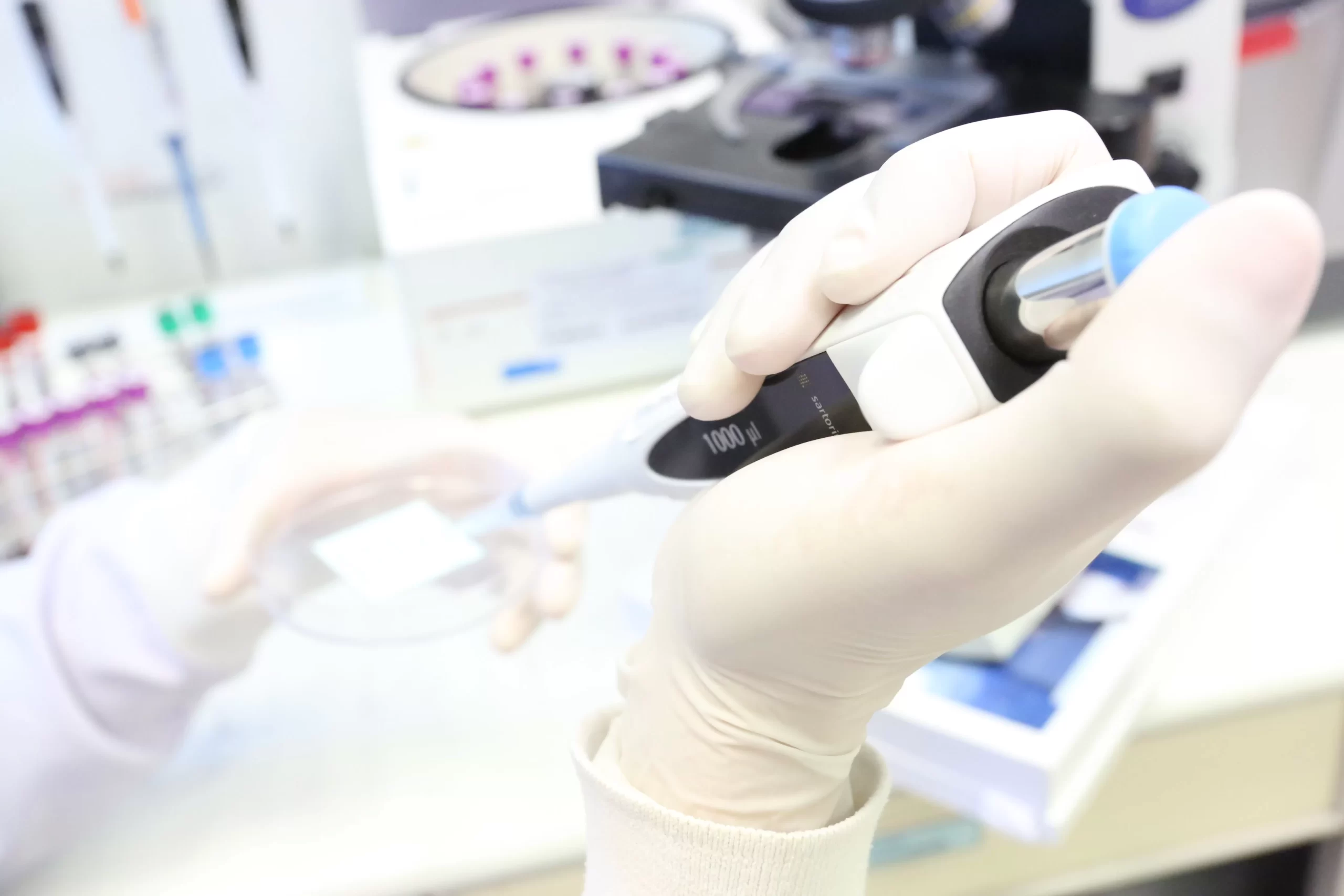
128 Slice CT Scan

Today, the number of people with chronic conditions such as diabetes, renal disease, stroke, high blood pressure and coronary artery disease has been increasing due to our changed way of life and stress. The latest studies by the World health organization have show that coronary artery disease is a leading cause of death. One third of population dies because of this condition, especially in underdeveloped countries, including Thailand .
The main factors in coronary artery disease are the narrowing and blockage of the arteries by plaque, which consists of cholesterol and calcium. The main risk factors include diabetes, high blood pressure, high cholesterol, stress and cigarette smoking.
To diagnose coronary artery disease, doctors will evaluate patient’s risk factors and perform some tests and then will divide patients suspected to be at risk into two groups; high and low risk. After that, there are two main diagnostic procedures that will usually be performed;
Conventional Coronary Angiography,(CAG)
CAG, which accurately assesses the coronary arteries, is currently the diagnostic standard for clinical evaluation of known or suspected coronary artery disease, after which the patients can be immediately treated by Coronary Artery Bypass Graft (CABG) or placement of a stent. Although complications rarely happen, the following may occur; hematoma at the site of the arterial puncture, coronary dissection and air embolus because in this procedure, a then plastic tube is inserted into an artery in the leg and advanced through the body into the coronary arteries. It is also an expensive procedure, and the patient needs, to stay in hospital for about 4-6 hours.
Cardiovascular Examination by 128-Slice CT
“Ordinary” computerized X-Rays (16-slice CT) were not as accurate in demonstrating coronary artery problems, because the heart, unlike other structure, is moving and beating inside the chest. However today, with the advent of the most advanced form of this imaging, the multi-slice detectors and high powered computer programs call the 128-Slice CT , in around 4 seconds; we can efficiently get information on the coronary anatomical features in as few beats as possible, with 90% accuracy. The CT has various advantages. It helps doctors to make the diagnosis of certain diseases faster, more easily, and potentially more accurately. Furthermore, after this procedure, the patients do not have to stay in hospital. The 128-Slice CT is now a well known procedure leading to diagnosis of all diseases related to arteries or vessels.
Those who should have a cardiovascular check up include:
- Those with the following risk factors for heart diseases;
- High Cholesterol – Diabetes
- Smoking – Family history of heart disease
- Those suspected of being at high risk of narrowed coronary arteries;
- Suffering from chest pain – Having an abnormal Stress Test
- Those having had the following treatment due to coronary artery disease;
- Insertion of stents – Coronary artery bypass graft surgery (CABG)
There are certain groups who are not suitable for CT scanning using contrast agents as it may cause sever allergy and acute renal failure;
- Severe asthmatics
- Heart failure
- Renal disease with high creatinine or chronic renal failure
- A history of allergy to sea food and/ or contrast agents
High speed 128-Slice CT for other parts of body examination
- To diagnose cardiovascular disease through narrowed vessels
- To diagnose blockages in arteries/ vessels all over the body such as heart, brain, kidney, extremities, etc.
- To diagnose pre-cancerous tumors in intestine and lungs
- To examine bone abnormalities
- To diagnose abnormality of brain issue
- To diagnose abnormality of abdominal tissue
- Others including diagnosis of abnormalities of blood vessels, such as aneurysm, and to measure abdominal fat, which is related to the quantity of calcium in arterial walls (coronary calcification) and to evaluate risk factors in the cardiovascular system.
Share :




